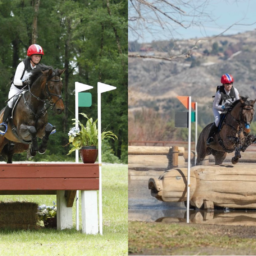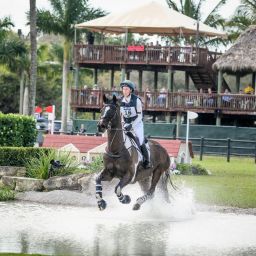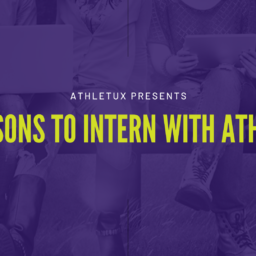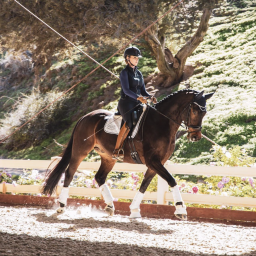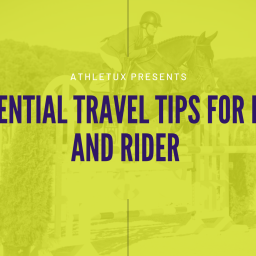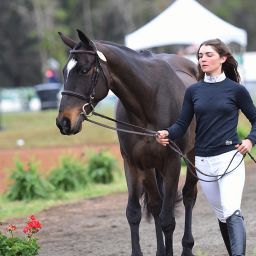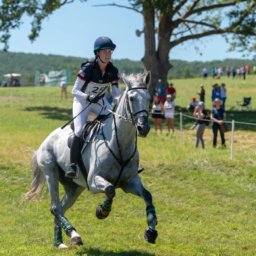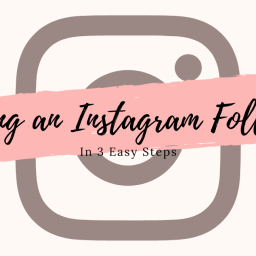
This summer, I had the chance to participate in the EA21 Program at Twin Rivers Ranch in Paso Robles, California, under the guidance and coaching of Emily Mastervich. Over the course of two days, Emily’s expertise, combined with the unique structure of the program, provided me with invaluable insights into both the technical and professional aspects of being a successful equestrian.
Day 1: Getting Started with Core Concepts and Collaboration
The clinic began with a meet-and-greet that allowed all of the riders to introduce themselves, share our riding goals, and discuss the challenges we face. Emily provided an overview of the clinic’s focus, starting with a discussion on the German training scale and how it plays a key role in training the dressage. We also covered topics like lateral movements, when to introduce them into training, and how to incorporate them into flatwork to benefit both the horse and rider.
An important aspect of this conversation was the opportunity to collaborate with the other young riders through various group activities. Working together allowed us to share ideas and perspectives on training, strengthening the sense of community within the group. It was a great reminder that, while riding is an individual pursuit, there’s a lot to gain from learning alongside others.
What stood out was Emily’s insight into catch riding. As a young rider, it was incredibly helpful to hear from someone with years of professional experience. She shared how she approaches new horses, how to quickly assess their needs, and make a strong first impression. This was not only about riding, but about building a relationship with each horse, and that was a valuable takeaway for me.
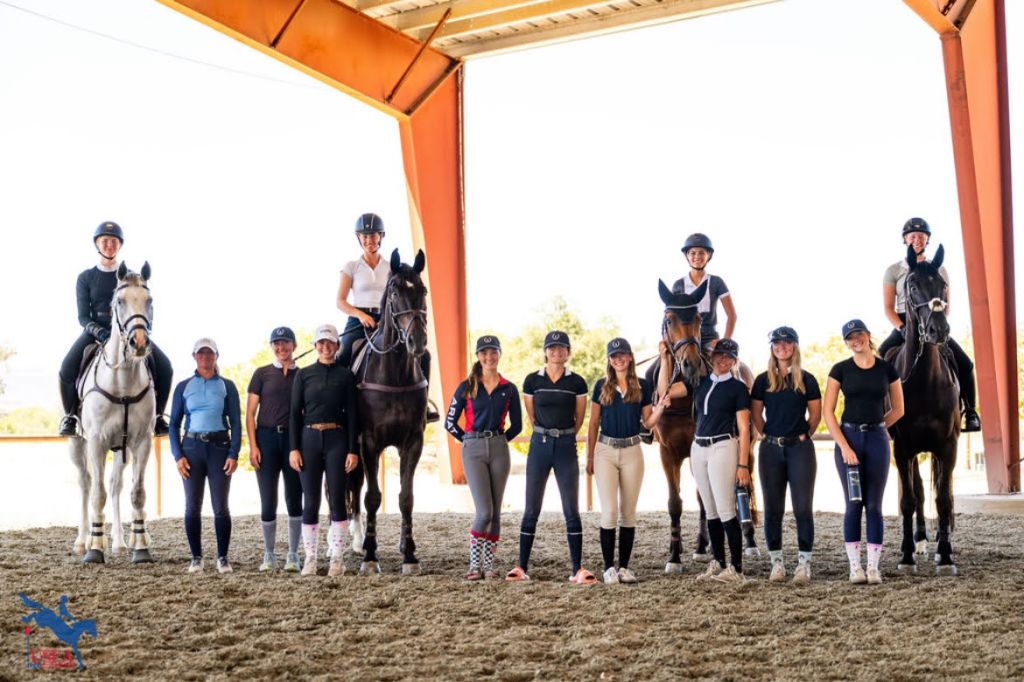
Day 2: Dressage day and Cross Country + Show Jumping Discussion
The second day of the clinic was dedicated to practical learning. In the morning, we had dressage lessons where we worked in pairs. These lessons started with the riders working with their own horses for about 30 minutes. Emily watched each rider warm up and gave real-time feedback, which helped identify key areas for improvement. She emphasized the importance of focusing on what’s best for the progression of both you and your horse’s learning. Emily assured us that her goal wasn’t to change how we ride or train, but to offer an additional perspective and provide guidance that could complement and enhance the training methods already working for us and our horses. After the initial lessons, we swapped horses with our partner. Catch riding a new horse was an eye-opening experience. It pushed me to quickly adapt to a horse’s movements and adjust my riding style to their unique needs. A lot of the horses in the pairs were completely different from one another, each requiring a different ride than we were used to with our own horses. We had to quickly read each horse’s behavior and adjust our approach in real-time. This experience not only helped us build rapport with horses of all types but also strengthened our ability to be flexible and adaptive in our riding.
The afternoon discussions focused on horse and stable management. We covered key aspects of maintaining a horse’s health and fitness, which is essential for any professional rider. Emily also shared her approach to managing upper-level horses and how she ensures their peak condition and longevity of their careers. We then had an in-depth discussion on cross-country and show jumping. Emily walked us through the different types of jumps we might encounter, from angled fences and coffins to gallop fences and related distances. She emphasized the importance of approaching each obstacle with care and consideration, understanding not just the technical aspect of the jump but also the intent behind the course design.
We also covered how positioning and balance are key to a horse’s success and confidence, both on the cross-country field and in everyday training. Proper technique and rider positioning are essential for ensuring a smooth and safe ride for the horse, helping them feel secure and capable in any situation.
In the afternoon, we worked collaboratively to set up a jumping course for the following day’s lesson. Emily incorporated suggestions from all the riders, ensuring the course would address the specific areas we wanted to work on. She designed a course rich with various exercises, including cross-country-style obstacles, related distances, tight turns, and both long and short strided lines. The diversity of the exercises allowed us to focus on different skills, and Emily’s detailed approach to each one gave us clear takeaways that we could apply to future training sessions and competitions.
Day 3: Jumping Lessons and Horse Welfare
The final day began with jumping lessons, where we had the opportunity to apply everything we’d learned. Emily structured the lessons with a range of exercises that challenged us to improve our control of the horses while also tackling more advanced technical combinations. We started with pole exercises and gradually moved on to more intricate courses, focusing on balance, approach, and timing.
Emily’s guidance throughout the day helped me fine-tune my technique, build on my strengths, and address areas for improvement. Each rider took away something unique from the experience, even though we were all jumping the same course.
After the jump lessons, the clinic wrapped up with a discussion on horse welfare. Emily emphasized the importance of caring for our horses, advocating for their well-being, and maintaining a professional, ethical approach to the sport. The conversation was an eye-opener, especially considering the increased awareness of animal welfare in competitive sports.It’s a topic that affects every rider, and I left with a deeper sense of responsibility as a rider and professional.
Reflections on My EA21 Experience: Key Takeaways and Gratitude
The EA21 Program was an invaluable experience that has made a lasting impact on my riding. The technical lessons in dressage and jumping, combined with meaningful discussions on horse welfare, provided me with a wealth of knowledge I’ll carry into my future training. It also offered the opportunity to connect with other passionate young riders, which added another layer of growth and inspiration to the experience.
I’m truly grateful to Emily, USEA, and all the sponsors who made this program possible. Their support creates opportunities for riders like me to learn, grow, and pursue our goals. If you believe in supporting the next generation of equestrians, I strongly encourage you to consider donating to the USEA. Your contribution helps sustain and expand programs like this, giving young riders the chance to develop their skills and reach their goals.
Learn more about the program:
USEventing.com/Membership/Emerging-Athletes-U21
Donate today at:



